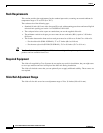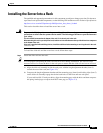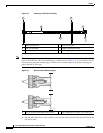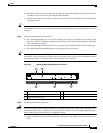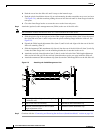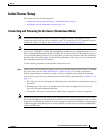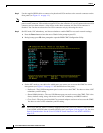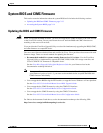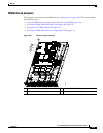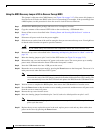
2-12
Cisco UCS C210 Server Installation and Service Guide
OL-20887-02
Chapter
NIC Modes and NIC Redundancy Settings
This server has the following NIC mode settings that you can choose from:
• Dedicated—The 10/100 management port is used to access the CIMC. You have to select a NIC
redundancy and IP setting.
• Shared LOM (default)—The two 1-Gb Ethernet ports are used to access the CIMC. This is the
factory default setting, along with Active-active NIC redundancy and DHCP enabled.
• Cisco Card—The ports on an installed Cisco network adapter card are used to access the CIMC. You
have to select a NIC redundancy and IP setting.
Note The Cisco Card NIC mode is currently supported only with a Cisco UCS P81E Virtual Interface
Card (N2XX-ACPCI01) that is installed in PCIe slot 1 (see
Figure 3-18 on page 3-34). See also
Special Considerations for the Cisco UCS P81E Virtual Interface Card (N2XX-ACPCI01),
page 3-37.
This server has the following NIC redundancy settings that you can choose from:
• None—The Ethernet ports operate independently and do not fail over if there is a problem.
• Active-standby—If an active Ethernet port fails, traffic fails over to a standby port.
• Active-active—All Ethernet ports are utilized simultaneously.
The active/active setting uses Mode 5 or Balance-TLB (adaptive transmit load balancing). This is
channel bonding that does not require any special switch support. The outgoing traffic is distributed
according to the current load (computed relative to the speed) on each slave. Incoming traffic is
received by the current slave. If the receiving slave fails, another slave takes over the MAC address
of the failed receiving slave.



